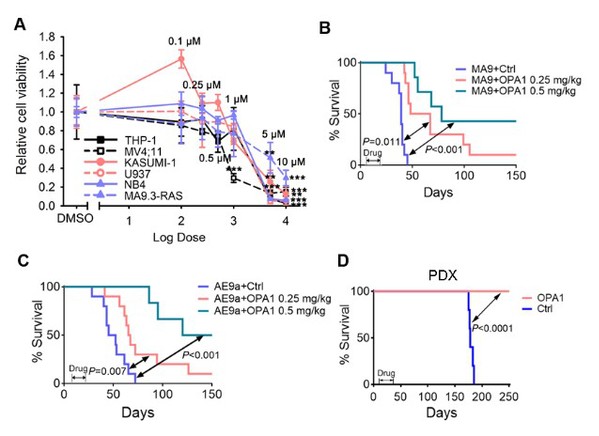Leukemia, the blood cancer, is a group of hematopoietic malignancies. Many types of leukemia are associated with poor outcome. Unfortunately, during the past a few decades, the first-line leukemia therapy has long been traditional chemotherapy with high cytotoxicity and low selectivity, such as the “7+3” strategy, i.e., a combination of cytarabine and doxorubicin. Also, side effects of such intensive chemotherapies are often severe, especially in elder patients. Therefore, it is in urgent need to understand the mechanisms of leukemia, and develop novel targeted therapy based on such comprehension.
The Ten-eleven translocation (TET) mediated DNA 5-hydroxymethlcytosine (5hmC) modification is a kind of epigenetic regulation, which regulates gene expression and function through subtle modifications without changing the genetic codes. In recent years, Dr. JIANG Xi of School of Medicine, Zhejiang University, and her colleagues have been making continuous efforts in the research field of leukemia epigenetics, and has contributed a series of important discoveries. In their previous publications, they successfully unveiled the role and regulatory mechanisms of TET genes in acute myeloid leukemia (AML).
Recently, the research group led by Dr. Jiang published an article entitled “Opioid receptor signaling suppresses leukemia through both catalytic and non-catalytic functions of TET2” in the journal Cell Reports.

Fig. 1 Therapeutic effects of OPA1 in AML.
Through an integration of genome-wide RNA-seq, 5hmC-seq, chromosome immunoprecipitation (ChIP)-seq and other mechanism studies, the authors show that OPA1 activated opioid receptor signaling, recruited transcription factors, e.g. EGR1, to the promoter of TET2 gene, and upregulated TET2 expression. TET2, as a key factor of DNA epigenetic modification, then functioned in both activity dependent and independent ways. On one hand, it mediated the 5hmC modification of its target genes, e.g. TRAF2; on the other hand, it recruited OGT to their shared targets, e.g. DNMT. Thus, the OPA1/opioid signaling/TET2 axis plays an important role in regulating the expression of the target genes, and curing leukemia (Fig. 2).

Fig. 2 The OPA1/opioid signaling/TET2 regulatory axis in AML.
This work unveils the regulatory mechanism of opioid signaling in TET-mediated epigenetic modification, reveals the previously unappreciated opioid-TET2 regulatory axis in leukemia, and suggests the therapeutic potential of opioid agonists, particularly OPA1, in leukemia, and even in other cancers with similar molecular mechanisms.
Source:JIANG Xi's Lab
Photo credit: the research team led by Dr.JIANG Xi